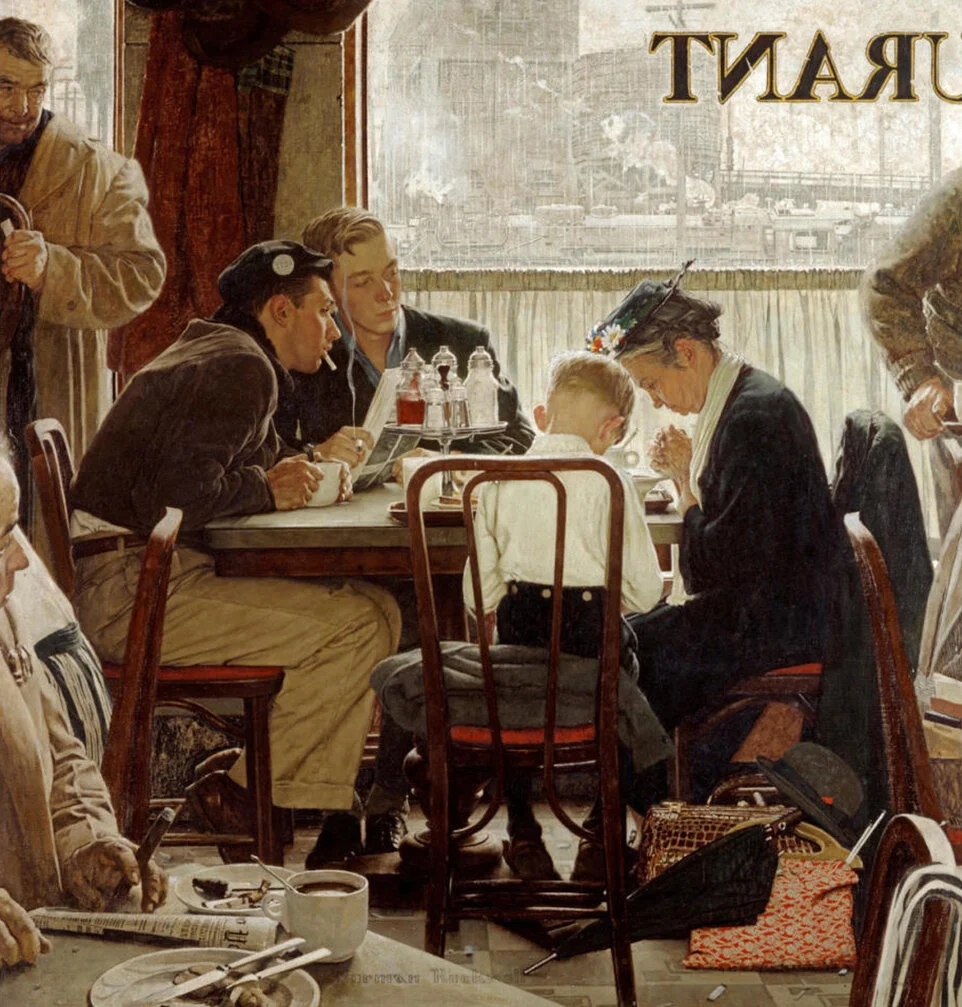Composition by Eric Lake
It seems we were all made to respond to good composition. It’s a big part of what moves us when we watch a film or appreciate a piece of art. Composition is a language we learn to read but have to be trained to speak it. It all starts with seeing and remembering.
When I’m laying out an art-piece or framing a shot, I find I am often influenced by what I’ve seen in a film or in a piece of art. This influence comes almost subconsciously and I’m thankful for the inspiration when it appears. Often, it’s only when a project is completed that I recognize the origin of inspiration. It’s amazing how images stay lodged in the brain for years before they are broken loose and reappear in a new form. The Bible’s words are proved true, “there is nothing new under the sun.”
Good composition is about flow, direction, and the visual balance of a piece. Filmmakers, illustrators and artists use composition to direct the eye, to create emotion and tension in storytelling. The cinematic experience doesn’t come from gear or equipment but from carefully planned shots realized on the screen. When thoughtful composition is missing, scenes become bland, ordinary and unmoving. The art of motion-pictures had its start with the Golden Age of Illustration. Artist like JC Leyendecker, NC Wyeth and Norman Rockwell have influenced many filmmakers. These illustrators learned from studying the works of the Old Masters.
Saying Grace by Norman Rockwell / The Saturday Evening Post's November 24, 1951, Thanksgiving issue.
Take one of Andrew Wyeth’s most famous work, ‘Christina’s World.” It’s a simple composition, a woman reclines on the ground in a treeless field as she looks up at a house on the horizon. Even without knowing the real life story of the model, the simple and powerful composition grabs you and pulls you in. I’ve read that this painting reflects the inner grief of the artist, who lost his father three years earlier in a tragic accident. Whatever Wyeth was thinking, the intrigue and mystery of the scene is not lost on the viewer. It’s a truly moving piece. Such is the power of composition.
Christina’s World, Copyright The Museum of Modern Art
As a young boy, I would watch my father lay out a sign. An expert Signwriter, he had a knack for creating clear and clean layouts. While his compositions were mostly simple, he really knew how to direct the eye of the reader, something missing from most signage today. Dad would unravel a china marker or use a piece of charcoal to lay out a pattern on brown butcher paper. He would often start first with several thumbnail sketches in the upper corner, working out the design. Afterwards, he would sketch the layout by hand without use of a projector. After perforating it with a pounce wheel, the pattern was then taped to the surface and pounced with a bag of charcoal dust. This left a dotted layout to follow with paint and brush. This is the same process Michelangelo used to make murals in the Sistine chapel. Watching my Father’s process over and over again impressed upon me the powerful part composition plays to convey a thought and emotion. Composition must be planned. It takes effort and discipline not to skip this important step.
Wyeth was inspired to create “Christina’s World” after watching his neighbor in a field. She had a muscular disorder that took away her ability to walk. Therein lies the key to making moving compositions. We must learn to see, notice and remember compositions that grab our attention around us every day. They are in the works of art we admire. File these ideas away until we need a way to communicate those same feelings again to our viewer.
Dad had a beautiful hand lettering style. Arm over arm, no maul stick needed.





